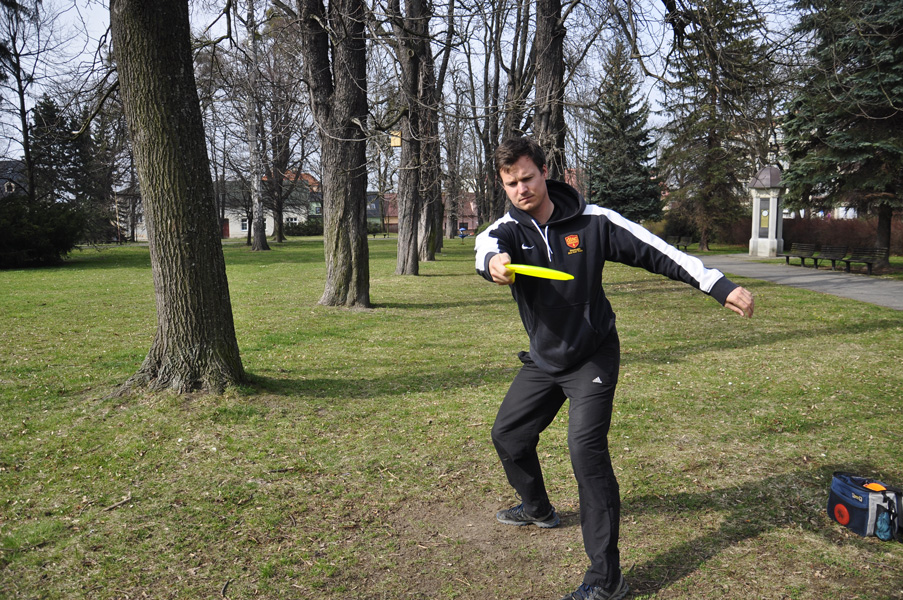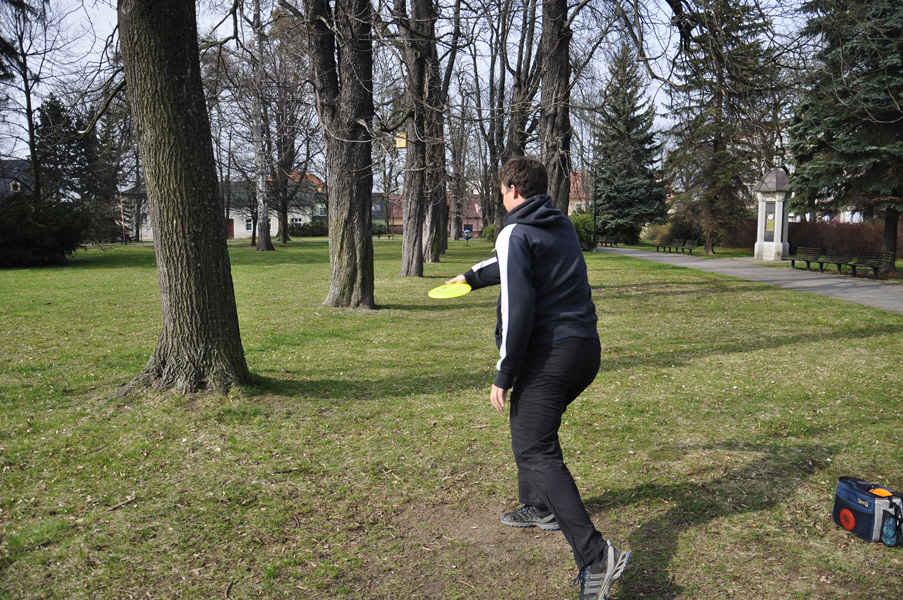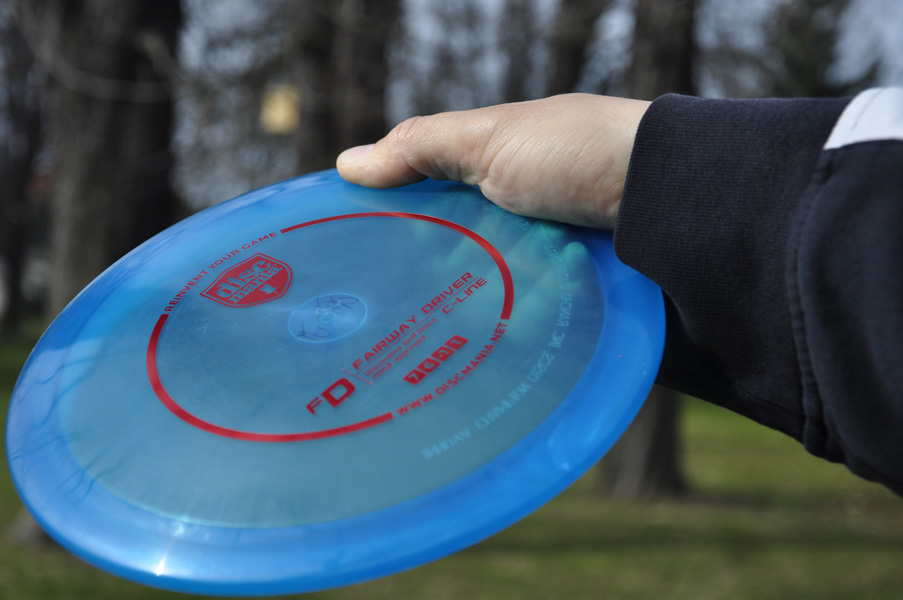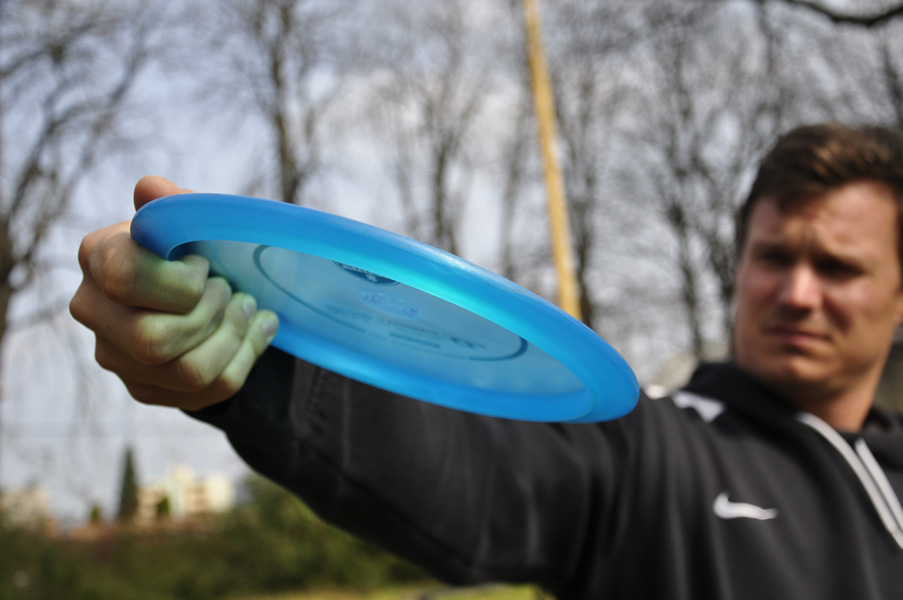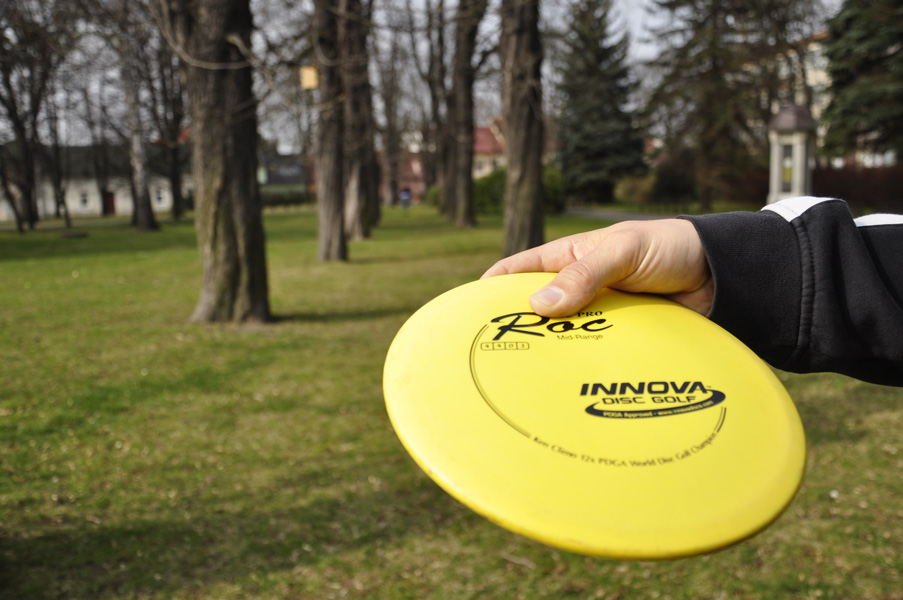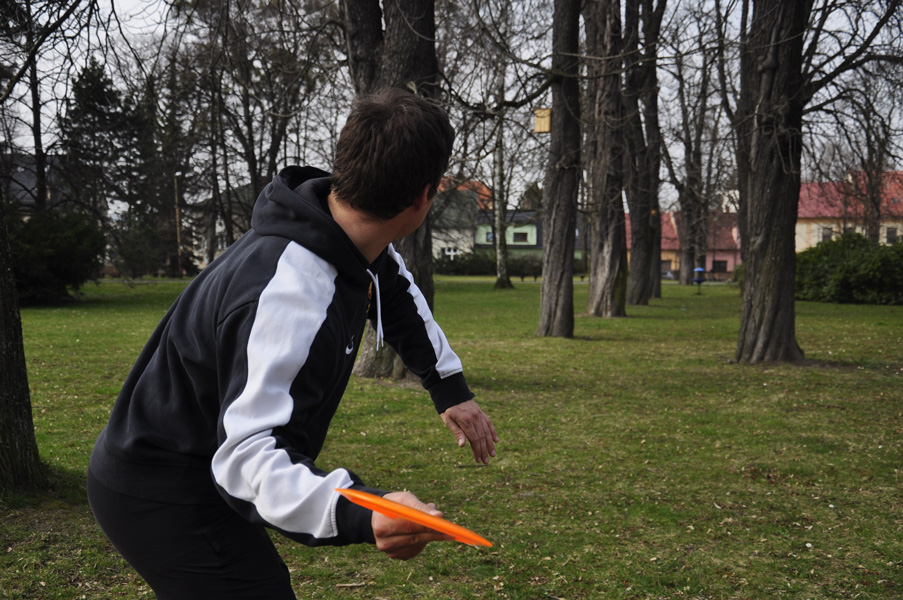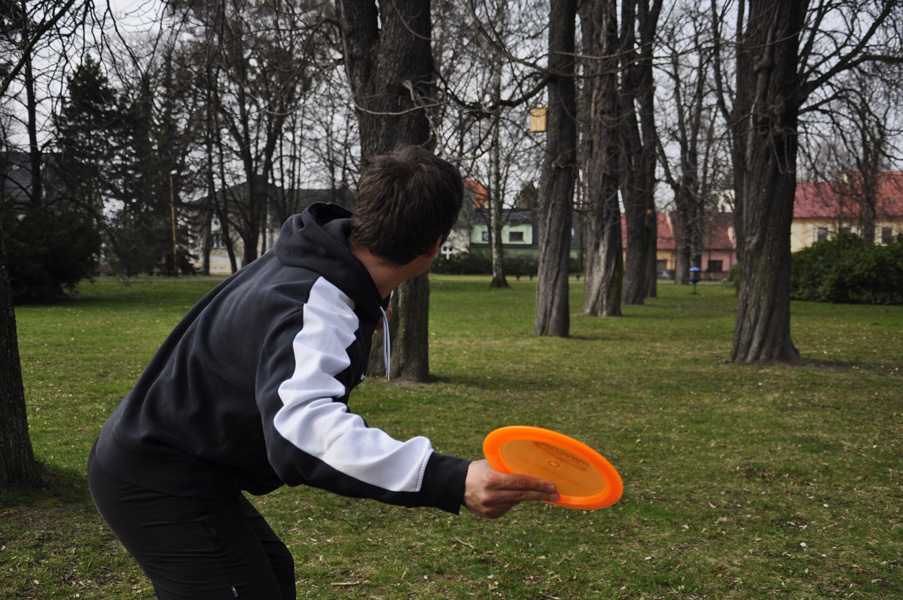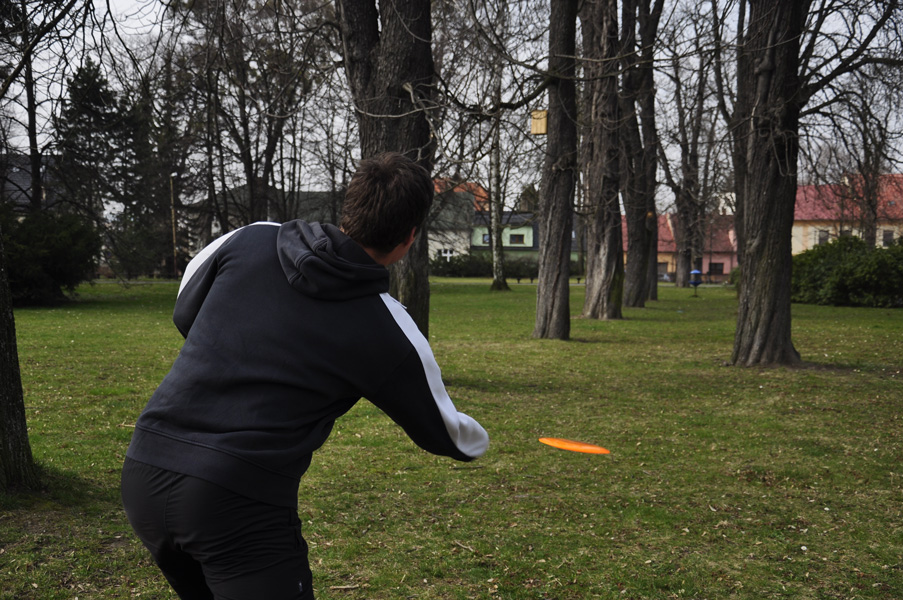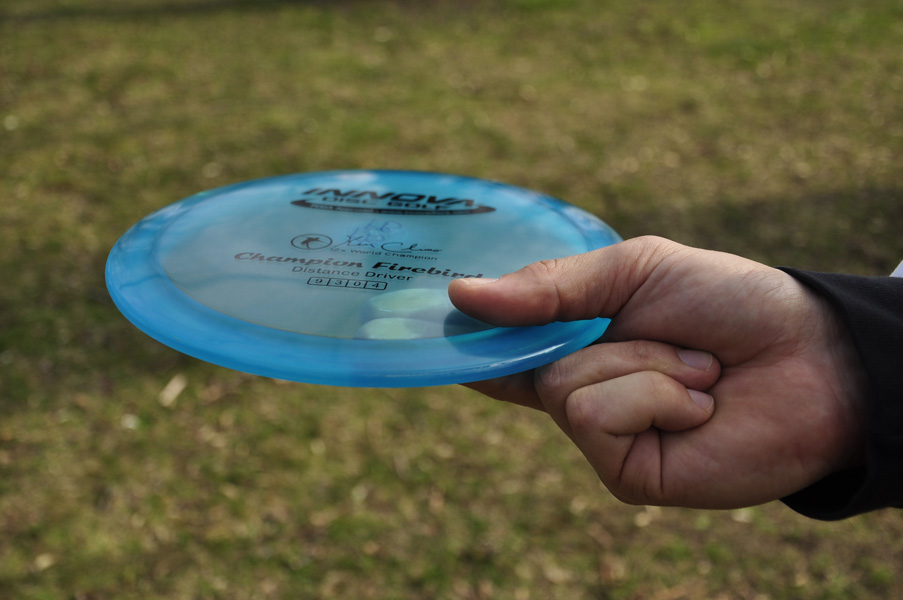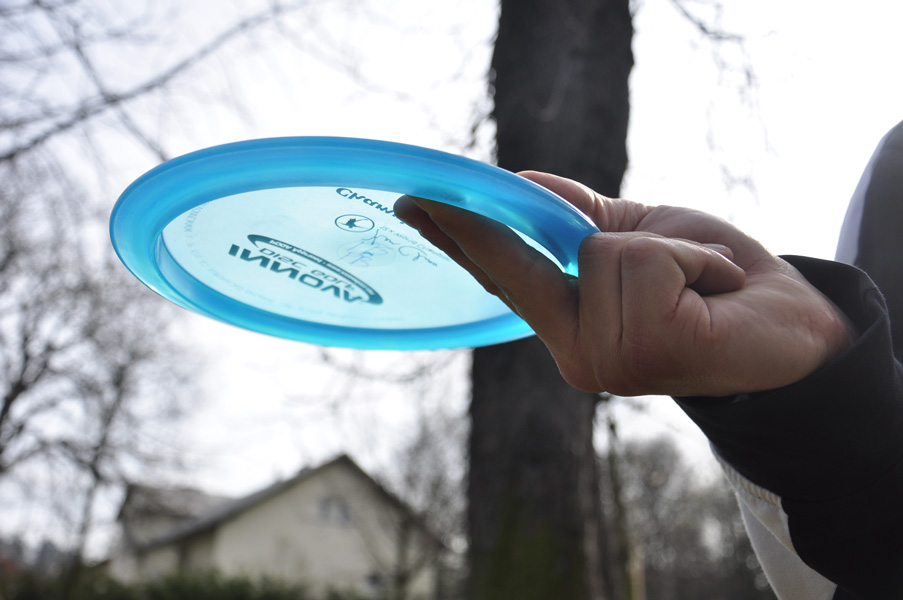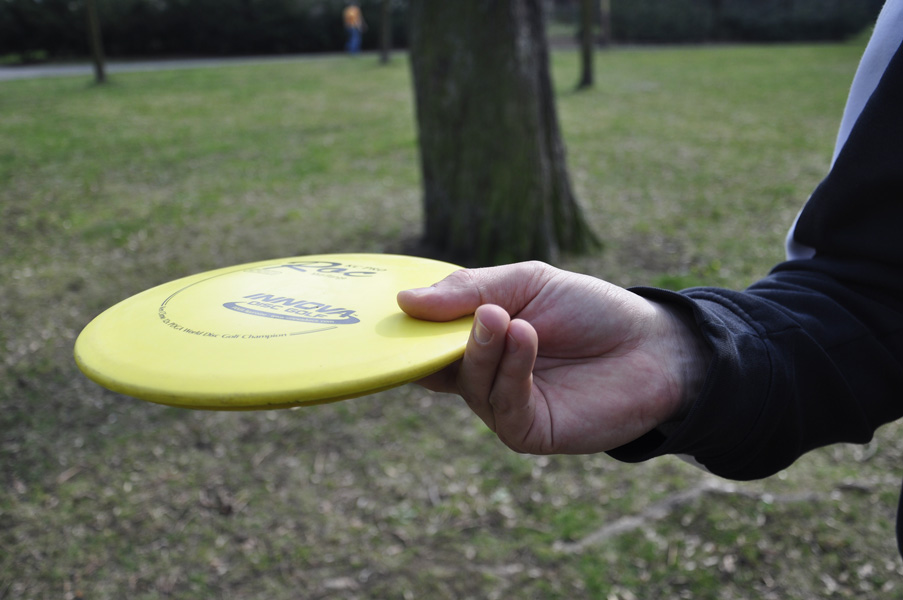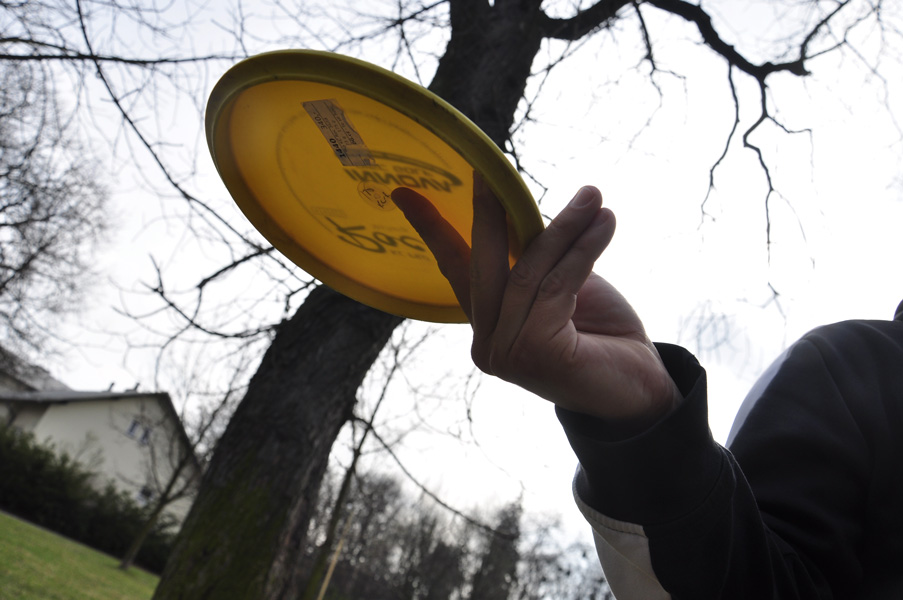How to Start Playing Disc Golf
Do all the different colors, brands, materials, names, numbers and throws confuse you? We are not surprised. Continue reading and we will make it all crystal clear. We will start from the very beginning - disc golf itself, picking your very first disc, describing different throws, types of discs, plastics and playing your very first tournament. There are also some tips to never stop getting better at the end.
Couple Things about Disc Golf
Disc golf is a sport. That is a fact. It can be described in five words, but it also has rules which make it a bit more complicated. The goal is to get your disc from the tee to the basket in the lowest amount of throws. Everybody keeps his own score but it is usually played in group of 3 to 5 people. You can change the discs you throw as you proceed through the hole, because each of them flies differently.
Which Disc Should You Pick and What to Focus on in the Beginning
Your first main goal is to throw the disc straight. Then you need to work on the angels, a straight disc can be thrown straight, but it can also fly to the left or to the right, depending on the angle you release it on. Conclusion? Your starting disc or discs should fly straight, if you throw them flat.
Unfortunately nothing is that easy as the same disc is going to fly different for different people. It depends on two main factors: speed of the disc and its torque, or rotation. The faster you throw the disc, the more it will turn. There are basically two options to start with:
- Three discs - starter disc set - putter, midrange and driver. All our picked by us to fly as straight as possible for as many people as possible. It is always important to practice from slowest to fastest, not the other way around! If you do not want to invest as much money into the start of your career, pick option 2.
- One disc - putter or midrange. There is one important rule in disc golf - slower discs are always more accurate and controllable and accuracy is the main goal of our sport. You will lose some distance if you throw a putter instead of driver, but the pros can throw it way further than 100 meters, so it should not really matter. If you really want to get better at playing disc golf, start with mastering your putter. If you are more of a recreational player, midrange will suit your needs.
Flight of the Disc
People say that the true magical moment is when you throw the disc just right and flies on a beautiful curve around a tree you needed to miss and lands underneath the basket. The side it turns on first (and last) depends on its spin direction - clockwise (for right hand backhand or left hand backhand) or counter clockwise (for left hand backhand or right hand forehand).
How to Throw Backhand
According to professional termionology backhand is a throw, during which you have the same leg in front as is the hand you are throwing with. If you are right handed, the disc will first turn to the right (if you give it enough speed) and fade to the left at the end (when it slows down). To do it, try to mimic a movement like you wanted to lash a towel (see images below).
Well, that is nice, you say, but you cannot hold the disc the same way you hold a towel, can you? There are two basic grips you can use for disc golf and many advanced ones, but we will not confuse you with those. The first one is power grip which is usually used for drivers which need a lot of power and speed to fly. The second one is control grip, which you use for midrange discs and putters, when control and accuracy are the main goals. You will not be able to throw the disc as fast as with power grip, but you will affect its speed, angle of release and direction better. See images below for power grip (blue disc) and control grip (yellow disc).
How to Throw Forehand (Sidearm)
We started with professional terminology last time so let's do it again. Forehand is a throw when the opposite leg is in front than your throwing hand. That might sound confusing, but keep in mind that a similar kind of stroke is used in tennis. You can imagine it like stone skipping, the movement is actually almost the same (except for spin direction). Compared to backhand forehand is a bit faster and not so smooth, it does not give the disc as much spin but the power is the same so it is easier to turn the discs over too much. It also turns to the left first and fades to the right, because of it counter clockwise spin (if you are right handed). One of the bigger advantages of forehand is the fact that you can actually look at the target the whole time you are throwing.
Again, there are two grips you can use - a power grip and a control grip. No surprise here, you can throw further with power grip and more accurate with control grip. See images below (blue disc for powergrip and yellow disc for control grip).
|
Right handed |
Backhand |
Forehand |
|
Fades to |
left |
right |
|
Gives more |
spin than speed |
speed than spin |
|
For headwind |
is easier, thanks to fast spin |
is harder, because of slower spin |
|
Starting disc |
should be straight or a bit understable |
should be straight or a bit overstable |
How to Putt
Clink. We love that sound. Putting is all about that sound. Get the disc to the basket, make it clink. It is not backhand, it is not forehand, it is putting (although it is closer to backhand for sure) - the throw with which you are actually trying to hit the basket, not only getting as close to it as possible. Disc golfers usually use control grip for putting or something similar.
You can either be aggressive - spin putt, or careful - push putt. With the first you are trying to hit the target straight and fast. And if you do not, you will likely pay for that speed. The movement itself is based on bending your elbow and wrist and it is pretty fast. On the other side, push putt is a style where you do not want to hit the basket straight, more from up top, with a ballistic curve. If you do not, you will stay just next to the target, but it gets difficult when the wind is up. This movement comes from your shoulder, your elbow and wrist should be mostl straight.
|
|
Spin putt |
Push putt |
|
Most important part of body |
elbow |
shoulder |
|
Disc flies to the basket |
straight |
on a ballistic curve |
|
For the wind it is |
good |
bad |
|
Main advantage is |
distance and speed |
consistency |
|
Ideal discs are |
soft |
stiff |
Types of Discs
Drivers, midranges, putters... These words already came up and you might be starting to understand them. Discs are divided according to their speed. Putters are slowest, they fly straight and are actually the most important discs in your bag. Midranges are for those times when the target is too fat for your putter, but too close for your driver. They are also the most versatile. Drivers are the long-range missiles you will astonish your friends with when you show them that frisbee golf thing for the first time. You then divide them to fairway drivers (slower and more accurate) and distance drivers (really fast).
Flight Characteristics
You will find 4 numbers underneath each and every disc on this web. These characteristics exist so you can compare different discs between each other. Let's describe the, from the left to right. One thing to keep in mind for turn and fade - the description is based on right handed backhand throw.
Speed
Slowest discs have a speed of 1, fastest discs have a speed of 14. The number itself tells how fast the disc is able to travel through air (aerodynamics).
Glide
The name itself describes it all. Glide means how long the disc stays in the air thanks to its spin. 1 is the minimum (falls to the ground like a rock) and 7 is. the maximum (you can eat your lunch before it lands).
Turn
Now it gets interesting. When you throw the disc, it has a lot of speed in the beginning. And due to this speed, it turns right. The numbers range from -5 (maximum turn to the right) to +1 (no turn to the right at all). Discs with negative turn are better for beginners and people who are not able to throw the disc fast - they fly straight even with almost no speed at all. Watch out in headwind, though - these discs tend to turn over fast!
Fade
The opposite of turn, fade is all about low speed at the end of the flight - when the disc turns left. It ranges from 0 (straight) to 5 (fades to the left a lot). Discs with a higher fade are better for headwind (fly straighter and do not turn over).
So a disc with 7 6 -1 1 would fly with a moderate speed, you could eat your lunch before it landed and it would make a small s-curve, first to the right, then to the left.
Various Plastics and Materials
This is not about PVC or polystyrene. Our beloved disc golf plastics do not differ as much chemically, but let's not talk about that now. We have a number of different disc manufacturers and each of them has its own range of plastics. There is a description of this plastic next to each disc we offer.
Even though every manufacturer is different, all materials can be divided into these categories.
Base-line Materials
These are the cheapest materials of all which usually offer great grip. We only recommend it for putters if you want to play disc golf on an advanced level, but recreational players can also use it for midranges and drivers. Discs wear out fast, but that makes them more trainable and controllable over time. These discs have souls and mature like wine.
Base-line materials are: DX, D-line, Retro, Origio, Prime, Pro-D and Active.
Enhanced Putter Materials
This is usually the second cheapest plastic wher the main focus is on grip (surface of the disc) and flexibility. Feel is the most important thing when picking a putter. Thus, we recommend it for putters (other discs are not really made in these).
Enhanced putter materials are: KC Pro, JK Pro, R-Pro, XT, Soft P-line, Stiff P-line, Exo, Zero, Classic, BT, Jawbreaker, K3 or Electron.
Extra Durable Materials
The most durable plastics of all. They can take any beating you give them and their characteristics do not change with wear at all. These are usually translucent, but not all of them are. Their drawback is that they do not grip well and tend to be slippery when wet or cold. Discs tend to be more overstable than in other materials.
Extra durable materials are: Champion, C-line, Forge, Z, Opto, Lucid, VIP, K1 or Proton.
Durable Materials with Enhanced Grip (Premium)
They have the ideal combination of grip, durability and flexibility. If you want your game to be balanced and consistent, drivers in these materials are a must. They will do exactly what you want them to do and wear changes their characteristics only a little. What more do you want?
Durable materials with enhanced grip: Star, S-line, Neo, Gold, Fuzion, Tournament, Titanium, ESP, K1, Neutron and Plasma.
How to Get in Touch with Others
Disc golf has an ever growing community of players and fans. One way to do that is to follow our proDiscgolf.cz facebook page. If you want to play tournaments in the Czech Republic, make sure to check out www.idiscgolf.cz - there is a list of every tournament in here.
Every country also has its national association, you can find their list here at PDGA Europe.
How to Never Stop Getting Better
Now you know everything you need to start your disc golf career. Remember to favour accuracy over distance and try to be as much versatile as you can. And remember, disc golf is not about throwing, it is about playing. The best thrower is almost never the best player.
The next step for you is to go play your first tournament (there is nothing to worry about, trust us), become a member of your local club and of your national association and watch disc golf videos on YouTube from The SpinTV, JomezPro and Central Coast Disc Golf. Copying top players is a good thing.
